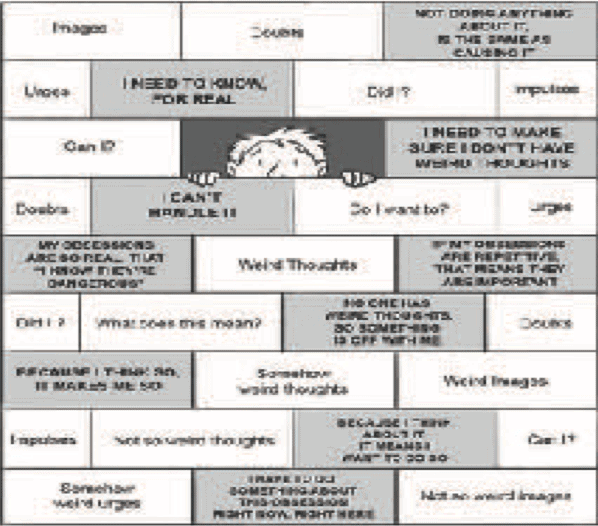Getting to know your mind
A pattern-making and a content generator machine & getting to know obsessions
Here is some important information for you to think about your brain:
- Our brain is more like a content-generator and a pattern-making machine than just an organ.
Among the many amazing qualities of our brain, there are two that are tricky ones: It’s constantly generating content and it’s constantly relating everything to everything.Our brain is designed to come with all types of content, hypothesis, predictions, theories, past thoughts, fantasies, stories about others, narratives about ourselves, dreams, and so on; non-stopping, it’s always coming up with something.
And, our brain is also constantly relating, associating, linking connecting, and also, basically creating all types of patterns, no matter where you’re, who you’re with, or where you’re coming from. These thinking patterns, taking too seriously as absolute truth, push you to organize your behaviors in ways that can be helpful or unhelpful to you.
Questions about, is this thought true and accurate? Is not as important as “is acting on these thoughts helpful I the long-term or not?
- Dealing with OCD means that your brain – as a pattern-making and content-generator machine – is playing it safe!
- Your brain is always doing its job to make sure you don’t get hurt, you don’t struggle. So, when having obsessions, your brain quickly perceives a threat – a fake threat- and demands that you play it safe. Then, there are a couple of things that happen:
◊ You come up with thinking patterns, called mental compulsions, to respond to the obsessions such as figuring out, arguing, solving, and so on (you will learn more about them in the next section)
◊ You approach the obsession with observable patterns, public compulsions, such as tapping, rubbing, checking, to name a few.
◊ You develop avoidance patterns – you stop doing what you care about, what matters to you, and organize your behavior around OCD.
Here is what you need to remember about obsessions:
- Obsessions are not static but dynamic creations from your mind.
Obsessions come in all types of colors, sizes, shapes, textures and any form you can imagine. Whether your brain started with one particular type of obsession, it doesn’t mean that that will always be the case; there is no switch that turns the brain on and off or switch that set limits for it. Our brain is limitless when coming up with all types of content, including obsessions. - Obsessions are the norm and not the exception.
Every single human being experience at some point or another disturbing bizarre, weird, and dark unwanted thoughts. This is a fact! - Obsessions are not different than any other thoughts, but they just happen to have extra adhesiveness
- As powerful and bossy as obsessions look and sound like, and no matter what type of content they have – violent, moral, sexual, scrupulosity, harm, germs- they’re just thoughts. And thoughts are just a chain of letters, images, words-put together.
- Your obsessions may vary from fears of contracting an illness, doubts about if your partner is the right partner, doubts about making the best of your life, fears about coming suicide, doubts about whether you want to attack someone, fears about making mistakes, to name a few.
- The literature has referred to different types of OCD over the years – harm, existential, scrupulosity, relationship, contamination, hyperawareness, just so right, metaphysical, moral, pedophile, perfectionistic, pure, religious, responsibility, and suicidal OCD -, but all those names, categories or types, are just because of the theme of obsessions or the theme of the compulsions; it doesn’t’t matter what’s the content of your obsession or the type of compulsion you’re doing, all the skills you’re learning in this workbook apply to all of them.
- Our brains are shapeable and you can overcome OCD!
As impossible as it sounds, an over-reactive brain is shapeable and you can learn research-based to tame those obsessions and get your life back!
From the book “Living Beyond OCD Using Acceptance Commitment Therapy: A Workbook for Adults”
www.actbeyondocd.com

